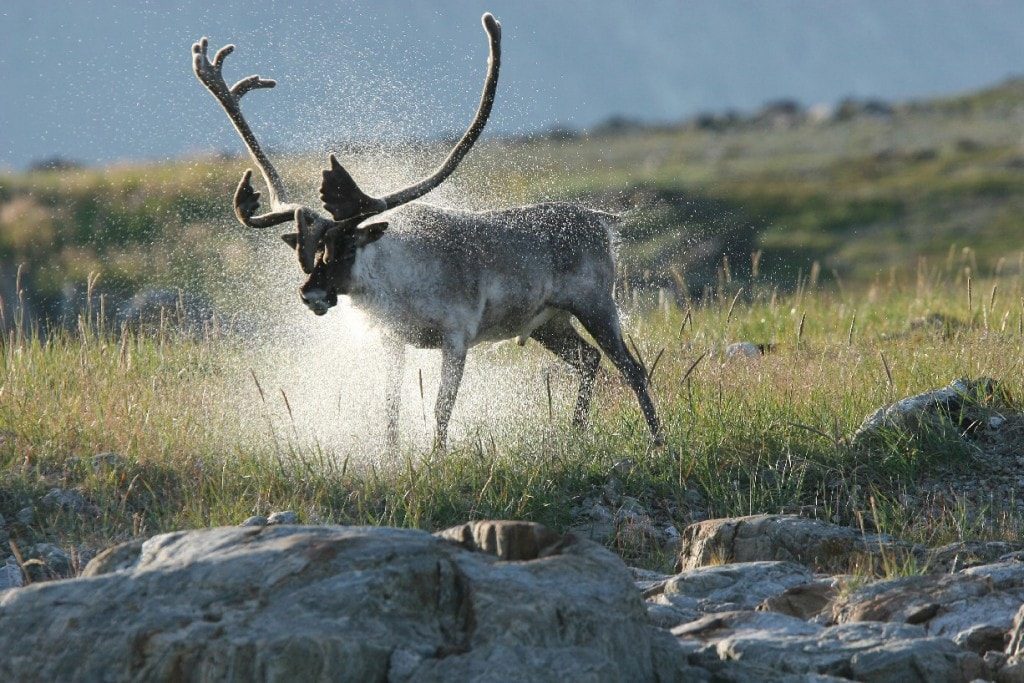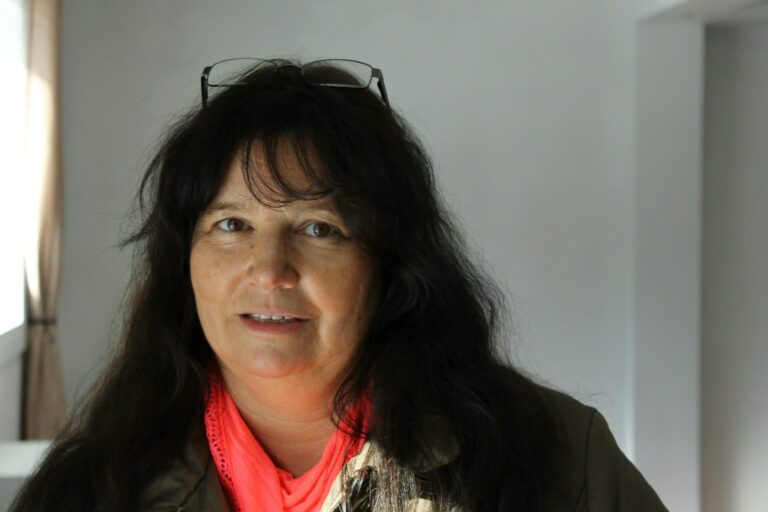There are no words for conservation, or hunting ban, or even for the caribou termed by the territorial government as the Bluenose East herd in the Sahtúgot’ı̨nę Dene dialect of Délı̨nę.
The language does not include the concept of wildlife management, and numbers were never used as a means of keeping track of animal population health.
Instead, harvesting the traditional Dene way, according to Walter Bayha, an ex-resource officer and current special advisor to Delı̨ne’s Chief Leonard Kenny, always relied simply on what animals were plentiful near the community during each season.
So how, then, has this community put forward what is being heralded as a groundbreaking community-led conservation plan for barren ground caribou?
Caribou make their own decisions
The plan, called Belarewı́le Gots’é Ɂekwe (Caribou For All Time), was developed last fall by the Délı̨nę First Nation, Renewable Resources Council and Land Corporation, following population counts by the NWT department of Environment and Natural Resources (ENR) on the Bluenose East herd.
“Ɂekwé [caribou] make their own ̨decisions – we’re not the boss of them,”
The surveys showed a 25 percent decline in calf recruitment from the previous three years, consistent with previous counts also indicating a steady decline.
As the primary harvester of the herd in the Sahtu, the people of Délı̨nę decided to create their own proposal, to build upon existing government management plans. The plan was put together with the technical support from the Sahtu Renewable Resources Board and funding from ENR.
For Bayha, the plan is neither new nor the first; it just happens to be the first time Délı̨nę traditional knowledge, values and histories have been recorded on paper in such a way.
Even though the document is a plan of action for caribou conservation, Bayha says it would be inaccurate to consider the document as a plan for wildlife management; rather, he says, it is about managing people and their relationship to the land based on the traditional way of doing things.
“The Belarewı́le Gots’é Ɂekwe plan we’re talking about, all we did is bring our grandtathers’ knowledge forward,” Bayha says.
In his grandfather’s day, people didn’t travel hundreds of miles by plane or snowmobile to find caribou. Instead, they hunted what was plentiful nearby and shared it collectively.
That’s why one of the key statements in the plan, which features stories, legends, illustrations and quotes from Elders, is the principle that cautions people from talking too much about the caribou: “Ɂekwé [caribou] make their own ̨decisions – we’re not the boss of them,” it reads.
Bayha says it’s an important law in a worldview that holds humans as being part of the ecosystem, and where animals are taken humanely with gratitude.
“It’s about having a good relationship with the caribou,” he says. “Don’t talk about caribou; talk about yourselves. The caribou doesn’t have an issue with management. It’s the people. So concentrate on your harvesting, how you harvest, where you harvest. Because when it comes down to it, really, we don’t manage it.”
That doesn’t mean the community has taken a hands-off approach when it comes to the herd. Last week, Délı̨nę implemented its own harvesting ban on the caribou after reaching its self-imposed limit of 150 animals for the season.
Harvesters reached a consensus that moose, boreal caribou, muskox, fish and ptarmigan should be harvested instead and shared among families. A no-hunting zone has been indicated with signage on the winter road, and a public awareness campaign is sharing info door to door about the plan and the decision to end this year’s hunt.
“This decision shows that Délı̨nę has the strength to regulate itself when it comes to caribou conservation,” Chief Kenny says. “It shows that we can return to traditional ways of harvesting that include many different sources of food. We need to give ɂekwe a rest.”
No word for ban
But unlike other management plans that have come from outside of the community, Bayha says Belarewı́le Gots’é Ɂekwé is designed to be non-antagonistic and respectful of the community’s right to determine the best course of action for people who aren’t following the plan.
The way we handle it is saying, ‘This area, we’ve hunted there enough.’”
“We don’t have a word for ‘ban,’” he says. “What we try to do is bring in things the way our grandfathers have done, because it’s not confrontational, it’s a way of life. The way we handle it is saying, ‘This area, we’ve hunted there enough.’”
The problem with a legal approach that involves limits and quotas, Bayha says, is that it creates competition among people.
“Whenever you brings numbers, whenever you bring that kind of pie to people and say, ‘Here’s all you can take’, and you bring everybody – from people who live here to people all the way down to northern Alberta — of course, people are going to say they want a piece of the pie, and that’s what they’re going to be concerned about,” he says. “That’s where the controversy starts. Then everything’s focused on that, and that has nothing to do with caribou.”
In the past, harvesters in Délı̨nę would gather frequently to talk about where animals were the most bountiful and healthy. Such a forum was also a space to discuss the behaviours of people who were not conforming with community laws, where such people had to justify their actions to everyone present.
That same code is applied in the new plan, which references a “sentencing circle” of Elders, family members and community leaders to address instances of non-compliance. ENR is to be contacted only as a last resort.
More importantly, the community has created an awards program as a financial incentive. The Dene Ts’ılı̨ awards will recognize families, hunters, trappers, Elders and others who demonstrate excellence in practicing Dene law and traditional conservation practices.
“We’re going to recognize people who hunt the way our grandfathers did, who share, who are hardworking, who are of value to our community, who spend a lot of time on the land,” Bayha says. “Those types of people — people learn from them.”
Délı̨nę will be presenting its plan at the Sahtu Renewable Resource Board’s Bluenose East Caribou hearing on Mar. 1-3 in the community, marking the first time in the Northwest Territories that a community plan will be considered alongside one developed by the government.
ENR will also be presenting its management proposal, which calls for a harvest limit of 163 animals for the entire Sahtu region, but is also open to community-based, culturally appropriate harvest monitoring enforcement measures.
Bayha says the community’s history contains “more laws than the Wildlife Act” when it comes to the land, and is excited to reflect those in a document for the world to see.
“Hopefully our grandfathers are proud of it,” he says.







